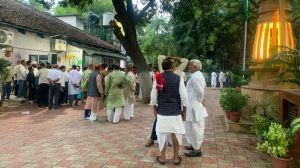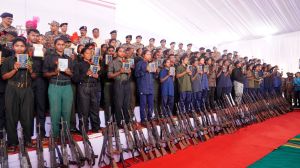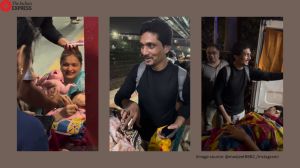At Saddam grave, legend lives on as fury simmers
Saddam Hussein’s burial place, in his village on the banks of the Tigris, may be the only public space in Iraq where the former ruler, hanged in December at the age of 69, is openly extolled.

Saddam Hussein’s burial place, in his village on the banks of the Tigris, may be the only public space in Iraq where the former ruler, hanged in December at the age of 69, is openly extolled. Under a decree dating from the US occupation in 2003, still in force under the new Iraqi government, all paintings, photographs and statues of Hussein are forbidden.
But in Al-Awja, Hussein’s legend lives on, though only as a pale shadow of what it was. The old reception centre where he lies—renamed “Martyrs’ Hall” by the family members who manage it—has none of the grandeur of the palaces he built during his 24-year rule. The trickle of visitors drops on some days to twos and threes, and only rarely reaches double figures.
Part of the problem is the danger that envelops all that involves Hussein. Since his burial, no other Western reporter has reached the site, though it lies less than three miles from Tikrit. Reaching here required what amounted to a guarantee of safe conduct from the sheik of Hussein’s Albu Nasir tribe and from other people in Awja with links to the “national resistance”.
The site itself offers mixed messages. Outside, behind a line of wilting sunflowers, Hussein’s family has buried six others, including his two oldest sons, Uday and Qusay, whose brutishness and greed, unfiltered by the propaganda that made a mythic figure of Hussein, made them among the most hated people in Iraq. Three others buried near them were associates who stood trial with Hussein and were hanged in the same dank prison chamber in Baghdad within weeks of his execution at dawn on December 30.
The scant flow of visitors reflects, too, the chaos that has supplanted the tyranny Iraq endured under Hussein. Al-Awja, 100 miles north of Baghdad, is in the middle of a fiercely contested war zone, where US troops passing on Iraq’s main north-south highway, flanking the village, are regularly ambushed. Along with that, there is continuing fury among Hussein’s loyalists at his overthrow, trial and hanging, a mood that simmers so strongly at Al-Awja that outsiders have generally stayed away.
When the body first arrived from Baghdad in the predawn hours of December 31, Hussein’s body was buried quickly in the interior courtyard of a local mosque, then moved within hours to a caramel-coloured, two-story reception hall built by Hussein as a gift to the village. There, the body lies in a shallow grave dug beneath the building’s rotunda, under a huge chandelier. Covering it are two Iraqi flags of the design used under Hussein, with the words “God is Great” in his handwriting.
A remembrance book with perhaps 1,500 signatures shows that most visitors come from the country’s Sunni heartland, predominantly from the provinces of Salahuddin, Anbar, Baghdad, Diyala and Nineveh, all insurgent strongholds.






- 01
- 02
- 03
- 04
- 05

























